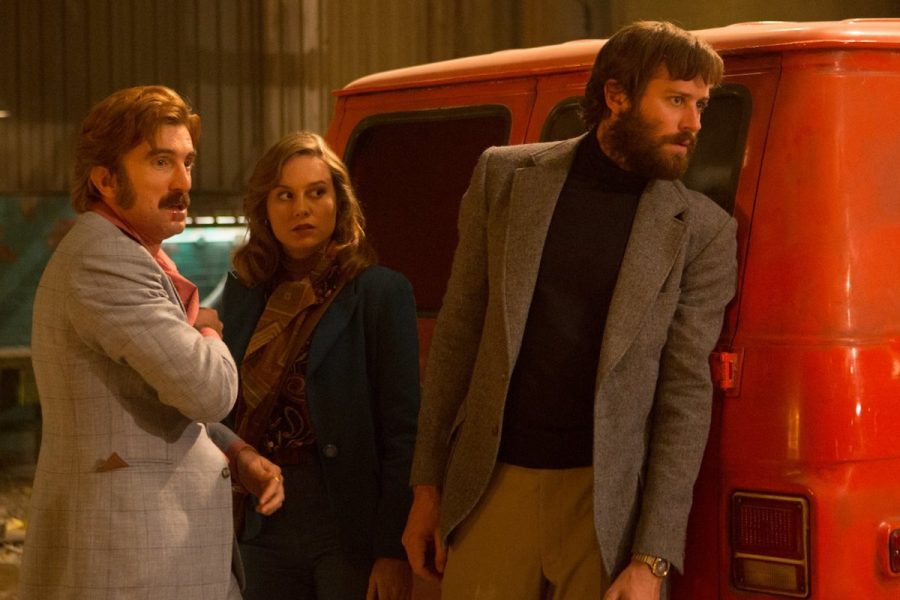“Free Fire:” 90 minutes of explosive, uncontrolled action
Vernon (Copley), Justine (Larson) and Ord (Hammer) hide behind a van. After premiering at the Toronto International Film Festival in late 2016, “Free Fire” saw its general U.S. release on Apr. 21.
April 23, 2017
7,000 bullets, 14 cast members (that’s including a telemarketer’s voiceover) and one location. “Free Fire’s” production may make its premise seem simple, and it is- a 1978 black market arms deal going awry and causing a shootout session- but it has surprising depth.
With a tagline, “All guns, no control,” “Free Fire” has a clear message on male egoism paired with gun violence, as tensions are caused by two characters’ offscreen skirmish escalating to involve the entire group at the arms sale. A part of its summary on distributor A24’s website reads that “[director Ben Wheatley] crafts a spectacular parody—and biting critique—of the insanity of gun violence.” The movie’s actual fight lasts for over an hour, but Wheatley keeps viewer engaged, through comedic dialogue and characters interacting with each other and the set’s environment. Violence levels rise throughout the film, the worst bloodshed being saved for the unanticipated ending.
“Free Fire’s” screenplay, written by Wheatley and Amy Jump, is strikingly witty. On the verge of trying too hard to invoke a 70s impression yet still working, the film contains one-liners such as Justine (Brie Larson) sighing, “Ugh, men,” and Vernon (Sharlto Copley) saying, “It’s protection from infection,” as he wraps cardboard around his wounded arms like armor. At another point, the sprinkler system goes off, and Chris (Cillian Murphy) is shown in front of a wall advertising umbrellas, holding an umbrella frame with a missing fabric canopy.
The ensemble, including Larson, Copley, Armie Hammer, Murphy, Jack Reynor, Babou Ceesay and Sam Riley brings out a dynamic performance, giving viewers a chance to see their characters’ personalities come to life. Larson plays a character different from those in movies that she is most known for, such as “Room” and “Short Term 12,” but excels in her delivery. As the only onscreen female character, Larson as Justine emerges as the one voice of sanity, yet avoids becoming a “female character” trope. Copley, who can give hit-or-miss acting, finds a role to shine in, as Vernon’s over-the-top personality commands the scenes.
Sound mixing was also significant in the “Free Fire,” as it established geography in a film where its majority takes place in a single room, making it coherent, opposed to characters seemingly shooting and running in random directions. Watching the film in a theater, viewers can truly feel depth within the set.
Though a $10 million budget makes “Free Fire” a relatively small movie, Wheatley shows that intriguing comedy-action does not need to be high budgeted or full of flashy effects.






